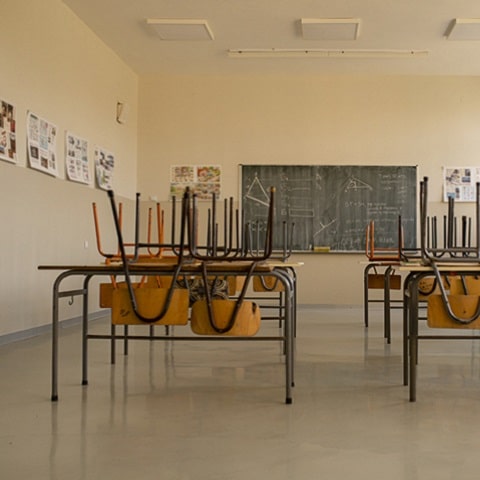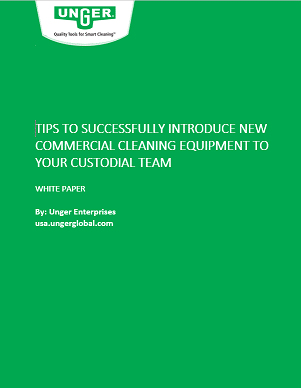
Upgrading School Cleaning Products to Foster a Safe and Clean Learning Environment in Light of Revised CDC Guidelines
The Centers for Disease Control and Prevention (CDC) recently released revised guidelines that say schools across the US should reopen for in-person learning regardless of whether or not they can implement all the recommended Covid-19 mitigation efforts. With data showing that the reopening of schools did not increase Covid-19 transmission rates when multiple mitigation measures were taken, districts are planning their reopening strategies to welcome students and staff back to the safest and cleanest environment possible. As part of these reopening plans, an essential consideration will be which school cleaning products and procedures are most effective in keeping transmission rates at a minimum.
Daily School Cleaning to Curb the Spread of the Virus
While there may not be conclusive evidence that touching contaminated surfaces spreads the virus, in general, educators and students feel more comfortable knowing that janitorial staff is conducting effective and thorough cleaning of the classrooms and other communal spaces. According to the CDC, school cleaning once a day is usually enough to sufficiently remove potential virus that may linger on surfaces. And when coupled with disinfecting (using disinfectants on the U.S. Environmental Protection Agency COVID-19 list), any remaining germs on surfaces are removed to further reduce the risk of transmission.
Facilities that use updated school cleaning tools and technology can help control the spread of pathogens, even without follow up disinfecting. Cleaning alone is the manual removal of microbes, dirt, dust and allergens from a surface. Understanding that most pathogenic microbes can’t survive on clean and dry surfaces, removal of dust, dirt, etc. during cleanings is an extremely effective first-step in preventing infection spread.
Having worked with educational facilities for over 50 years to insure clean and healthy learning environments, Unger recommends evaluating and considering the following features when sourcing commercial cleaning solutions:
- Microfiber Cleaning Technology
Cleaning surfaces with microfiber cloths and mops and an all-purpose cleaner can be effective at removing 99.9 % of microbes (EPA, 2002). Microfiber is made up of thousands of tiny strands that are each 10-50 times smaller than the diameter of human hair. When woven together these strands create a surface area covered with millions of spaces between the fibers to trap moisture, dirt and debris, making it a superior cleaning technology when compared to other materials, such as cotton. For cleaning both low-risk surfaces (floors, windows, etc.) and high touch surfaces (desks, countertops, doorknobs, computers, etc.), you can expect to reduce more surface bacteria while utilizing less chemicals when using microfiber.
- Color-Coded Cleaning Equipment
Color coded cleaning systems are designed to designate specific cleaning zones within a school. Using distinct color-coding with school cleaning tools makes it easy for staff to separate equipment into their correct areas of use or cleaning task, reducing bacteria and cross-contamination between high and low-risk areas. For instance, a classroom floor mop does not find its way into a restroom cleaning situation. Using a combination of color-coded microfiber cloths and microfiber mops result in better sanitation school-wide.
- Dual Chamber Buckets
When wet mopping floors, dual-compartment mop buckets separate clean water from dirty solution, as opposed to a single mop bucket, ensuring the use of clean water with every mop stroke. By isolating dirt in one bucket and maximizing usage of the cleaning solution in the other, the result is a highly efficient floor cleaning process that makes a significant impact on cross contamination prevention efforts.
- ‘Cleaning from a Distance’ Design
Any tool that gives custodial staff the added advantage of touch free cleaning (keeping their hands at a safe distance from surface contaminants) is a win-win any time, but especially when combating infectious disease spread. Telescopic and extendable poles, when used in conjunction with a full range of attachments – washers, squeegees, dusters, brushes, bulb changers – keep staff away from potentially harmful germs and debris.
Introducing New School Cleaning Products and Equipment to Your Staff
 For school cleaning professionals, preparing for the reopening of school this year in particular means taking on new custodial duties, practicing new techniques and learning to use the latest school cleaning tools and equipment to help combat the spread of infectious diseases. While some will make adoptions quickly and easily, these changes can be inherently difficult for others.
For school cleaning professionals, preparing for the reopening of school this year in particular means taking on new custodial duties, practicing new techniques and learning to use the latest school cleaning tools and equipment to help combat the spread of infectious diseases. While some will make adoptions quickly and easily, these changes can be inherently difficult for others.
As a commercial cleaning equipment manufacturer that helps schools on a daily basis achieve their needs, we understand that introducing new products to your team could be difficult. Download this whitepaper from Unger to learn about best practices and talking points to implement new products with your team.
